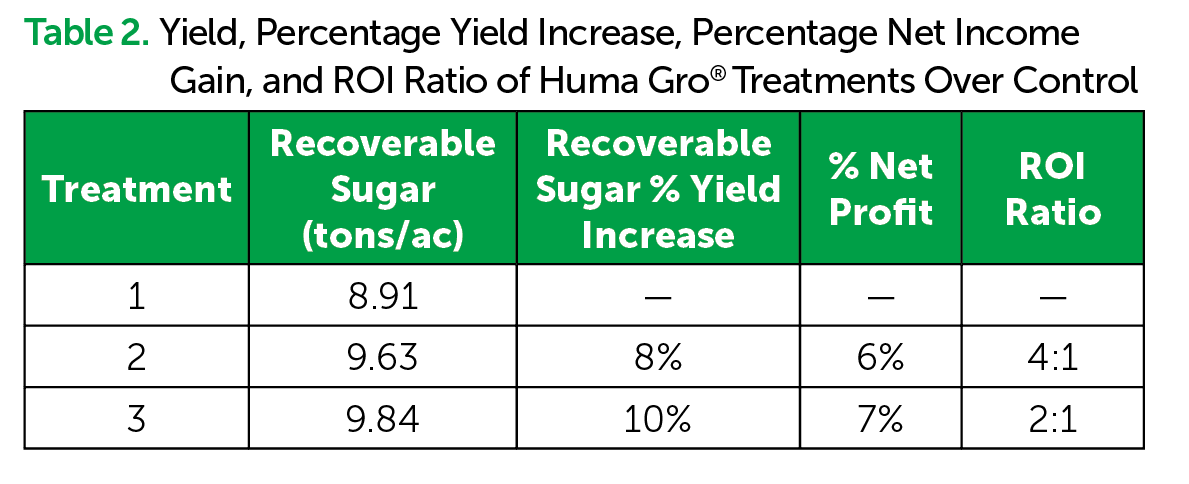Materials and Methods
This trial on sugar beet (Beta vulgais) was conducted in Homedale, Idaho by SRS Farms & Crop Services. The crop was seeded on April 18 and was harvested on October 18. A basic grower’s standard fertilizer program was applied to all plots (300 lb/ac made up of MAP 11-52-0, potash 0-0-60, Tiger 90 sulfur, ammonium sulfate, Zn, Mn, and B). The additional Huma Gro® preharvest treatments (Jackpot® at 2 qt/ac, Huma Gro® Calcium at 1 qt/ac, and Super Potassium® at 1 qt/ac) were foliarly applied in September, 21 days before harvest (DBH) for Treatment 2 and Treatment 3, and in October, 10 DBH for Treatment 3.
Results
Table 2 demonstrates that the additional preharvest Huma Gro® treatments yielded higher recoverable sugar (9.63 tons/ac for Treatment 2, 9.84 tons/ac for Treatment 3) than the untreated grower’s standard (8.91 tons/ac). The one application of Treatment 2, which had a smaller yield increase than the 2 applications of Treatment 3, resulted in a larger return on investment (ROI) than Treatment 3.
Conclusions
Even though the recoverable sugar yield differences among the three treatments were not statistically significant, the Huma Gro® preharvest treatments yielded 8% to 10% higher recoverable sugar than the grower’s standard program. Applying the Huma Gro® products once at 21 days prior to harvest gave a higher ROI than applying the products two times before harvest. This
single application returned $4 for every $1 spent.
Click here to view/download the complete report.
Related Posts

Promax® Ad in Progressive Crop Consultant
This Promax® advertisement ran on the back cover of the May-June issue of Progressive Crop Consultant. More information on Promax® is available here.

The Huma Gro Farmer Podcast: Episode 7—Optimal Crop Growth – Blog

Rutgers Univ.: Huma Pro® Stimulates Root Growth
Huma Pro® Stimulates Rhizophagy Cycle of Microbes to Increase Root Growth, Rutgers Univ. Conducted by: James White, PhD, Rutgers University Huma Gro® Products: Huma Pro® OBJECTIVE The purpose of this research project was to evaluate how humic acids stimulate microbial activity and initiation of the rhizophagy cycle (in which plants cultivate microbes on their roots


